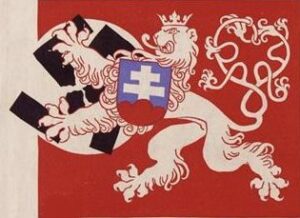The Ribbentrop-Molotov Pact, also known as the German-Soviet Pact, consisted of two parts. The first part was an economic agreement signed on August 19, 1939, which established a trade of manufactured goods from Germany for raw materials from the Soviet Union. The second part was a nonaggression pact signed on August 23, 1939, promising that neither country would attack the other. This pact allowed Germany to invade Poland on September 1, 1939, without fear of Soviet intervention, and led to Britain and France declaring war on Germany on September 3, 1939, marking the start of World War II.
The nonaggression pact contained a secret protocol that divided Poland and eastern Europe into Soviet and German spheres of influence. The Soviet Union annexed eastern Poland in 1939, and in 1940, occupied and incorporated the Baltic states, and seized northern Bukovina and Bessarabia from Romania. Hitler had always seen the pact as temporary, and in 1940, he worked to secure Germany’s ties in southeastern Europe. The invasion of the Soviet Union, Operation Barbarossa, was ordered by Hitler in December 1940, and on June 22, 1941, German forces invaded the Soviet Union, less than two years after the pact was signed.
The text of the Nazi-Soviet Non-Aggression Pact stated that both parties would refrain from violent acts or aggressive actions towards each other and not lend support to any third power that engaged in belligerent actions towards the other party. They also agreed to maintain continual contact and exchange information on common interests. Any disputes or conflicts would be settled through friendly exchange of opinion or arbitration commissions. The treaty was ratified within a short time and became effective upon signing, and was to last for ten years with the possibility of a five-year extension.
Menu

